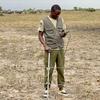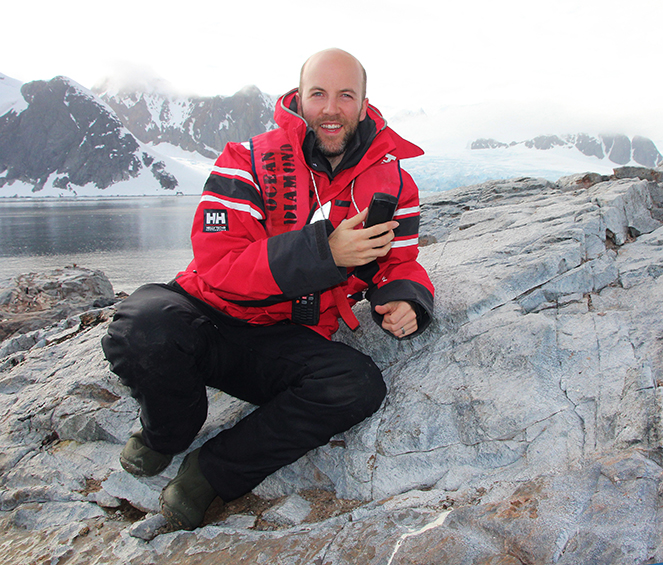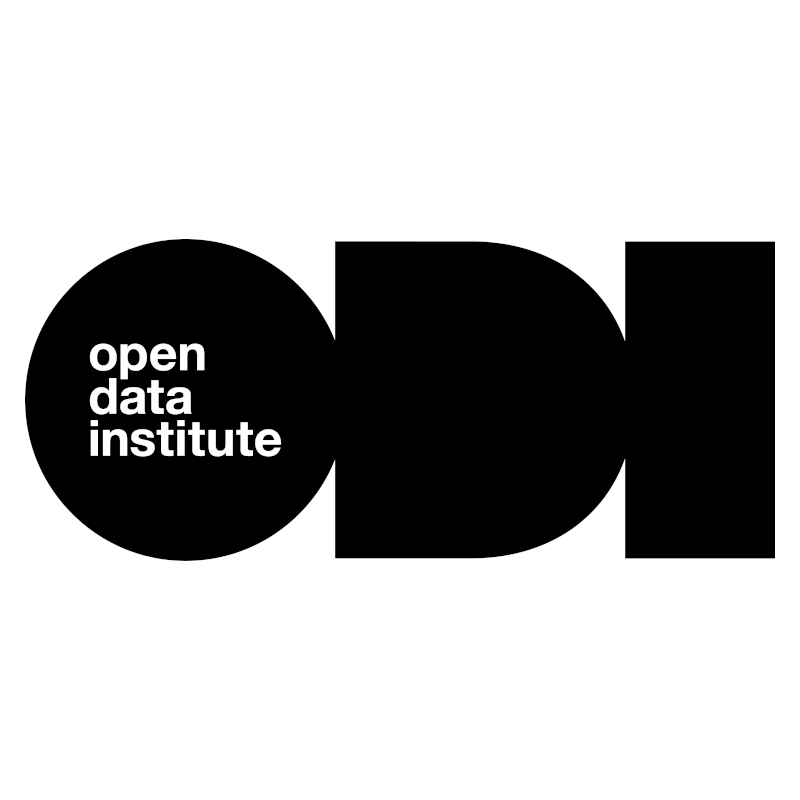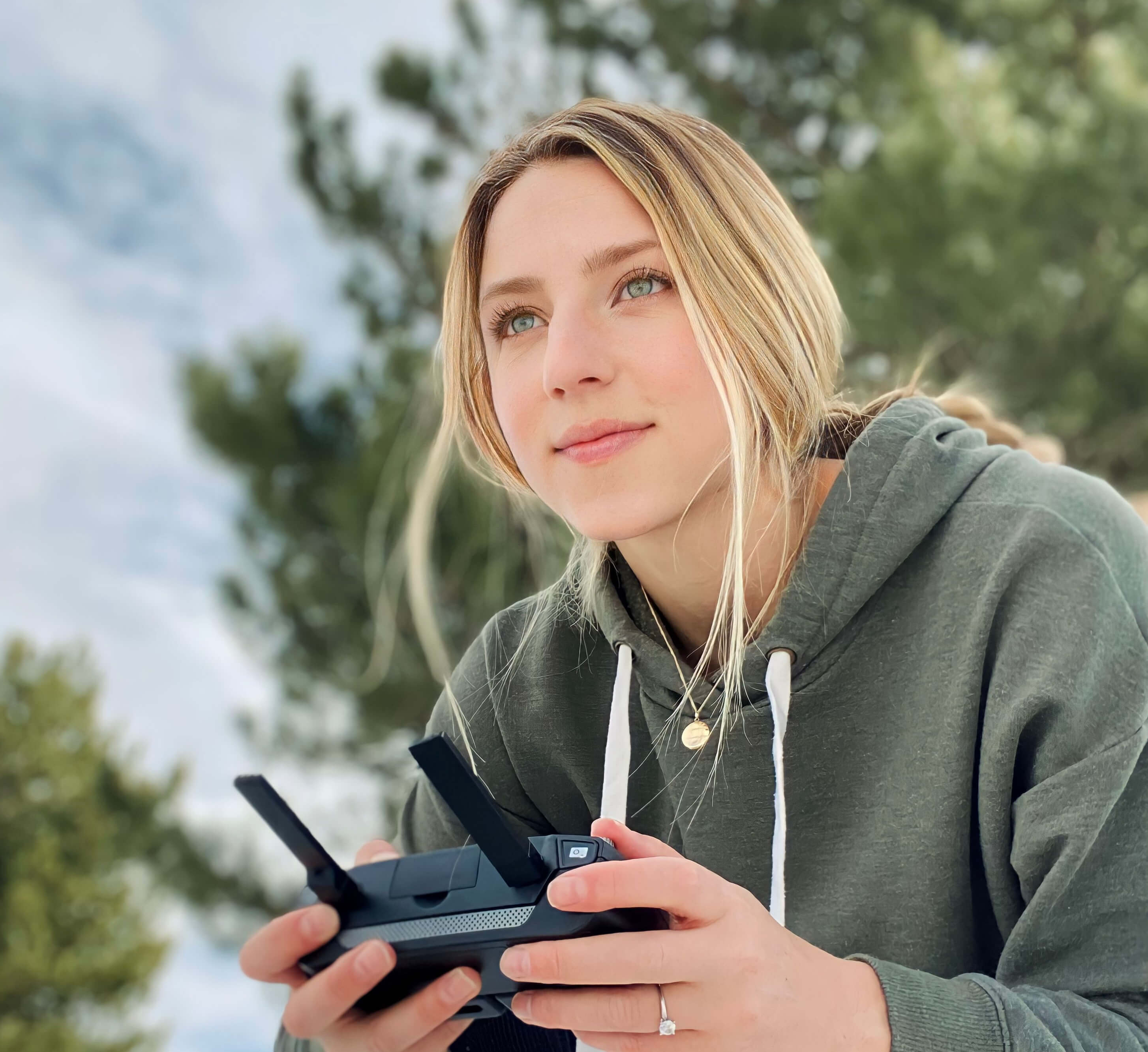With new technologies revolutionizing data collection, wildlife researchers are becoming increasingly able to collect data at much higher volumes than ever before. Now we are facing the challenges of putting this information to use, bringing the science of big data into the conservation arena. With the help of machine learning tools, this area holds immense potential for conservation practices. The applications range from online trafficking alerts to species-specific early warning systems to efficient movement and biodiversity monitoring and beyond.
However, the process of building effective machine learning tools depends upon large amounts of standardized training data, and conservationists currently lack an established system for standardization. How to best develop such a system and incentivize data sharing are questions at the forefront of this work. There are currently multiple AI-based conservation initiatives, including Wildlife Insights and WildBook, that are pioneering applications on this front.
This group is the perfect place to ask all your AI-related questions, no matter your skill level or previous familiarity! You'll find resources, meet other members with similar questions and experts who can answer them, and engage in exciting collaborative opportunities together.
Just getting started with AI in conservation? Check out our introduction tutorial, How Do I Train My First Machine Learning Model? with Daniel Situnayake, and our Virtual Meetup on Big Data. If you're coming from the more technical side of AI/ML, Sara Beery runs an AI for Conservation slack channel that might be of interest. Message her for an invite.
Header Image: Dr Claire Burke / @CBurkeSci

Explore the Basics: AI
Understanding the possibilities for incorporating new technology into your work can feel overwhelming. With so many tools available, so many resources to keep up with, and so many innovative projects happening around the world and in our community, it's easy to lose sight of how and why these new technologies matter, and how they can be practically applied to your projects.
Machine learning has huge potential in conservation tech, and its applications are growing every day! But the tradeoff of that potential is a big learning curve - or so it seems to those starting out with this powerful tool!
To help you explore the potential of AI (and prepare for some of our upcoming AI-themed events!), we've compiled simple, key resources, conversations, and videos to highlight the possibilities:
Three Resources for Beginners:
- Everything I know about Machine Learning and Camera Traps, Dan Morris | Resource library, camera traps, machine learning
- Using Computer Vision to Protect Endangered Species, Kasim Rafiq | Machine learning, data analysis, big cats
- Resource: WildID | WildID
Three Forum Threads for Beginners:
- I made an open-source tool to help you sort camera trap images | Petar Gyurov, Camera Traps
- Batch / Automated Cloud Processing | Chris Nicolas, Acoustic Monitoring
- Looking for help with camera trapping for Jaguars: Software for species ID and database building | Carmina Gutierrez, AI for Conservation
Three Tutorials for Beginners:
- How do I get started using machine learning for my camera traps? | Sara Beery, Tech Tutors
- How do I train my first machine learning model? | Daniel Situnayake, Tech Tutors
- Big Data in Conservation | Dave Thau, Dan Morris, Sarah Davidson, Virtual Meetups
Want to know more about AI, or have your specific machine learning questions answered by experts in the WILDLABS community? Make sure you join the conversation in our AI for Conservation group!
Tech-Driven Conservation with a Wild Twist

- 0 Resources
- 1 Discussions
- 8 Groups
- 0 Resources
- 0 Discussions
- 14 Groups
Universidad San Francisco de Quito
Biologist/Professor focusing on carnivore conservation in Ecuador
- 0 Resources
- 0 Discussions
- 12 Groups
- @Thorondor
- | He/Him
AI engineering working on cutting edge AI research and product for detecting objects. Big wildlife and conservation enthusiast and amateur wildlife photographer.
- 0 Resources
- 0 Discussions
- 2 Groups
finding ecological solutions using sound and conservation tech
- 0 Resources
- 0 Discussions
- 4 Groups
Currently a data scientist in industry working on mechanistic models of risk, previously worked on modeling coral reefs. I am interested in the potential for emerging technologies and new ideas to help us solve environmental crises.
- 0 Resources
- 0 Discussions
- 14 Groups
Fauna & Flora
- 0 Resources
- 3 Discussions
- 10 Groups
- @OakAlice
- | She/her
PhD researcher standardising machine learning approaches for behaviour classification in free-roaming wild animals.
- 0 Resources
- 0 Discussions
- 7 Groups
- @Kasi
- | He/him
Game Rangers International
Kasi Amor Kalande is a young conservationist with experience in elephant movement research, GIS, and conservation technology.
- 1 Resources
- 0 Discussions
- 7 Groups
- @Manahil_ijaz
- | she
I’m a nature enthusiast who loves exploring wildlife and ecosystems. Through my research in ecology, I channel this passion into protecting and preserving biodiversity.
- 0 Resources
- 0 Discussions
- 3 Groups
- 0 Resources
- 0 Discussions
- 4 Groups
- @Doris0511
- | She/Her
Founder of Life on Purpose Detroit, we work with Detroit Youth to learn about technology and conservation.
- 0 Resources
- 0 Discussions
- 3 Groups
Microbial fuel cells, developed by Plant-powered Camera Trap Challenge winners Plant-E, have been used successfully with Xnor.ai's energy harvesting camera technology to capture what are thought to be the world's first...
15 October 2019
In a first, UMass Amherst, Cornell use AI to mine big migration data on massive scale
9 October 2019
Rutgers University, Microsoft AI for Earth, Google Earth Outreach and San Diego Zoo Global are proud to announce the world’s first camera trap technology symposium, to take place November 7th and 8th at Google...
2 September 2019
Sharing failure, tech support for conservation, roaming mentors, conservation tech hype cycles and developing new road maps - participants in our tech workshops at ICCB 2019 shared an abundance of ideas for how to shape...
21 August 2019
In this case study, Cooper Oelrichs of Save Indonesian Endangered Species Fund (SIES) breaks down his proposal for the development and training of an automated rhino identification system from limited camera trap data.
27 July 2019
The WILDLABS TECH HUB is supporting technology solutions tackling the illegal wildlife trade, in collaboration with the Foreign & Commonwealth Office, Digital Catapult, Satellite Applications Catapult, Amazon Web...
4 June 2019
To further their missions, LDF and Microsoft are collaborating on the AI for Earth innovation grant to support applicants in creating and deploying open source machine learning models, algorithms, and data sets that...
4 June 2019
Traditionally, illegal wildlife trade thrived in physical markets. But today it has also moved online. In China, more than half of the trade in elephant ivory items happens on e-commerce platforms. Enrico Di Minin and...
31 May 2019
This webinar recording will provide a brief overview of current SMART functionality, highlight case studies of large scale and innovative SMART deployments, and detail how SMART is embracing and leveraging new...
21 May 2019
In February, we released an open call for the WILDLABS TECH HUB, offering 3 months of support for solutions using technolgy to tackle the illegal wildlife trade. We were overwhelmed by an incredible 37 submissions,...
13 May 2019
To realise the potential benefits of data for our societies and economies we need trustworthy data stewardship. We need to establish different approaches to deciding who should have access to data, for what purposes and...
15 April 2019
Happy World Wildlife Day! To celebrate, this week we've asked our community to share photos showing how they are using tech in the field or the lab, using the #Tech4Wildlife hashtag.
3 March 2019
June 2025
event
July 2025
October 2025
event
event
December 2023
event
73 Products
Recently updated products
16 Products
Recently updated products
| Description | Activity | Replies | Groups | Updated |
|---|---|---|---|---|
| 📸 Do you use camera traps in your work? Take part in our survey!Hi everyone! I’m currently a final-year engineering... |
|
Camera Traps, AI for Conservation, Data management and processing tools, Open Source Solutions, Software Development | 3 weeks 4 days ago | |
| WILDLABS colleagues—My team at TNC is looking for support as we try to understand opportunities of AI applications for freshwater (eco)... |
|
AI for Conservation | 4 weeks 1 day ago | |
| Hi Adam! Sounds like you have your work cut out for you. I have not used radar systems or AI systems for this sort of detection, but there are methods using change detection... |
|
AI for Conservation, Drones, Wildlife Crime | 1 month ago | |
| Hey Amber, that makes a lot of sense! And this effort by Insect Detect is amazing, thanks for sharing! |
|
AI for Conservation, Autonomous Camera Traps for Insects | 1 month ago | |
| Ritika, All the best! I hope someone provides a more substantive answer! I have also graduated with masters in AI and ML recently. Difference being I am at the end of my... |
|
AI for Conservation, Software Development | 1 month ago | |
| One of our goals with explorer.land is to bridge satellite data and on-the-ground perspectives — helping teams combine field updates,... |
|
AI for Conservation, Geospatial, Open Source Solutions, Sensors | 1 month ago | |
| True, the US ecosystem is a challenging space right now, for basically all sectors. We should not let the US chaos prevent us from engaging with opportunities in other... |
|
AI for Conservation, Camera Traps, Connectivity, Drones, Emerging Tech, Ethics of Conservation Tech, Marine Conservation, Sensors | 1 month 1 week ago | |
| Hi, just wanted to let whoever is interested that v.1.3 of DeepFaune is out! Deepfaune is a software that runs on any standard... |
|
Camera Traps, AI for Conservation, Open Source Solutions | 1 month 1 week ago | |
| New stable release : v1.5.1We are pleased to announce the latest release with several important enhancement, fixes and documentation improvements to ensure compatibility with the... |
+15
|
Acoustics, AI for Conservation, Open Source Solutions, Software Development | 1 month 1 week ago | |
| Hi all, I'm Vainqueur BULAMBO. I'm looking for a fully funded PhD opportunity in ecological data science or conservation... |
|
Acoustics, AI for Conservation, Autonomous Camera Traps for Insects | 1 month 2 weeks ago | |
| A nice work from @dmorris! See his LK post. "Lots of information in the conservation literature is represented in maps (e.g., the... |
|
AI for Conservation, Geospatial | 1 month 2 weeks ago | |
| Hi all, I'm the founder of a company in Texas that provides thermal drone surveying for private game ranches. Right now, we're doing everything completely manually in terms of... |
+20
|
AI for Conservation | 1 month 2 weeks ago |
Tech Tutors: How do I get started with Wildlife Insights?
29 July 2021 12:04am
Wildlife Insights Launches
27 July 2021 12:00am
Tech Tutors: How do I get started with Megadetector?
22 July 2021 3:34pm
Opportunity: Lead an ML Workshop
 Edge Impulse
Edge Impulse
21 July 2021 12:00am
How do I get started with Wildlife Insights?
19 July 2021 12:00am
How do I get started with Megadetector?
 Siyu Yang
Siyu Yang
7 July 2021 12:00am
WILDLABS Tech Tutors: Season 3
6 July 2021 12:00am
How do I choose the right camera trap(s) based on interests, goals, and species?
 Marcella Kelly
Marcella Kelly
6 July 2021 12:00am
BearID Featured: Artificial Intelligence & Other New Technology In Bear Research
 WILDLABS Team
and 1 more
WILDLABS Team
and 1 more
1 July 2021 12:00am
PhDs (or MSc) in tech + nature conservation ?
28 April 2021 9:16am
26 May 2021 9:14pm
carlybatist, I can help with python. Is there anything you or people in your network may need help?
About ML - can you tell 3 main challenges you'd think as priority in conservation, that ML can be helpful ? Also, anything that also small NGOs may struggle to work on, due to limited budget / IT capacity, and so they may benefit from freelancers ? Large NGOs or international agencies will likely work with established companies. I'ìd like to know if there could be a niche were I can interact directly with NGOs and philantropic institutions, both for supporting with services, as well for listening to feedback to project proposals that could benefit from mutual collaborations (e.g. tech pilot + fundraising = startup and product iterations with lower costs).
Also, can you mention a few activities / roles that may offer both outdoor + analytics / tech skills ?
Piorirty is outdoor for me. But since I have a few tech skills and management skills, im trying to trade them!
26 May 2021 10:04pm
You should join the Key Conservation app, which connects people and NGO's for specific needs, whether funding, time, or skills (programming included). Organizations can list particular things they need and you can get day-to-day updates on progress.
In terms of how ML is used in conservation, it's mostly to process the large datasets yielded by conservation tech (camera traps, passive acoustics, biologging, remote sensing/GIS). Annotating detections (which pictures have animals, which species a call belongs to, where deforestation is happening through satellite imagery, etc.).
And lots of freelancing opportunities come up in Wildlabs - the community threads and the biweekly digest. Twitter is also great for finding those kinds of opportunities, search by relevant keywords or hashtags (e.g., #tech4wildlife). I would also start following conservation tech organizations on LinkedIn and Twitter or subscribing to their newsletters or listservs so you don't miss opportunities as they come up.
New Papers: Methods in Ecology and Evolution
23 April 2021 12:00am
New Papers: Remote Sensing in Ecology and Conservation
22 April 2021 12:00am
BirdCLEF 2021 Kaggle Challenge
 The Cornell Lab of Ornithology
The Cornell Lab of Ornithology
19 April 2021 12:00am
Looking for animal emotions data for ML
17 March 2021 12:43pm
26 March 2021 4:06pm
There is a TON of research on ML algorithms for all this!
For facial rec-
BearID project - http://bearresearch.org/ (individual facial rec for grizzlies)
AnimalFACS (facial action coding system) - http://www.chimpfacs.com/ (the model started with chimps but they now have versions for orangutans, gibbons, macaques, dogs, cats, and horses)
A lot of the gesture/facial expression literature is focused on primates, particularly apes, so if you do a Google Scholar search on that, you'll loads of papers that have looked into this as well.
For vocals -
Carlson, N. V., Kelly, E. M., & Couzin, I. (2020). Individual vocal recognition across taxa: a review of the literature and a look into the future. Philosophical Transactions of the Royal Society B, 375(1802), 20190479.
Turesson, H. K., Ribeiro, S., Pereira, D. R., Papa, J. P., & de Albuquerque, V. H. C. (2016). Machine learning algorithms for automatic classification of marmoset vocalizations. PloS one, 11(9), e0163041.
Wijers, M., Trethowan, P., Du Preez, B., Chamaillé-Jammes, S., Loveridge, A. J., Macdonald, D. W., & Markham, A. (2020). Vocal discrimination of African lions and its potential for collar-free tracking. Bioacoustics, 1-19.
Clink, D. J., Crofoot, M. C., & Marshall, A. J. (2019). Application of a semi-automated vocal fingerprinting approach to monitor Bornean gibbon females in an experimentally fragmented landscape in Sabah, Malaysia. Bioacoustics, 28(3), 193-209.
Spillmann, B., van Schaik, C. P., Setia, T. M., & Sadjadi, S. O. (2017). Who shall I say is calling? Validation of a caller recognition procedure in Bornean flanged male orangutan (Pongo pygmaeus wurmbii) long calls. Bioacoustics, 26(2), 109-120.
Hantke, S., Cummins, N., & Schuller, B. (2018, April). What is my dog trying to tell me? The automatic recognition of the context and perceived emotion of dog barks. In 2018 IEEE International Conference on Acoustics, Speech and Signal Processing (ICASSP) (pp. 5134-5138). IEEE.
Totakura, V., Janmanchi, M. K., Rajesh, D., & Hussan, M. T. (2020). Prediction of Animal Vocal Emotions Using Convolutional Neural Network. International Journal of Scientific & Technology Research, 9(2), 6007-6011.
Other -
Neethirajan, S., Reimert, I., & Kemp, B. (2021). Measuring Farm Animal Emotions—Sensor-Based Approaches. Sensors, 21(2), 553.
Hong, W., Kennedy, A., Burgos-Artizzu, X. P., Zelikowsky, M., Navonne, S. G., Perona, P., & Anderson, D. J. (2015). Automated measurement of mouse social behaviors using depth sensing, video tracking, and machine learning. Proceedings of the National Academy of Sciences, 112(38), E5351-E5360.
26 March 2021 7:44pm
Thank you VERY much for that, Carly. I really appreciate it. I have only heard of the bear research project and was not aware of the others. This is very helpful.
FYI: Most studies I am aware of use ML with facial recognition software. I am interested to find out if there are recognition software/research for facial-gesture-voice-speech as this will be more accurate to read animals that have less elastic facial expressions than primates or humans.
The 2021 #Tech4Wildlife Photo Challenge: Community Highlights
25 March 2021 12:00am
Event: tinyML for Good: Conservation & Climate
 Edge Impulse
Edge Impulse
22 March 2021 12:00am
Allen Coral Atlas - using machine learning to map coral reefs
17 March 2021 6:48pm
Building Experts Into AI
15 March 2021 12:00am
Kaggle Competition: iWildcam 2021 - FGVC8
12 March 2021 12:00am
Funding Opportunity: COVID-19 Science Fund
10 March 2021 12:00am
Resource: WildID
8 March 2021 12:00am
Looking help with camera trapping for Jaguars: Software for species ID and database building
23 February 2021 9:49pm
2 March 2021 3:44pm
Hi Carmina,
I definitely get not wanting to create another copy of your data, I realized this about Camelot just a little late, and we did have to buy a 4 TB external hard drive. The unique names that Camelot assigns to its copies of the data are also not friendly if you want to move things around.
I mentioned that Wild.ID is being more and more integrated with Wildlife Insights, but it can still be used as a standalone software. It has the same format as Camelot, but I think it doesn't create and additional copy (I might be wrong about this, though). You should take a look at this, it might be what you need.
As for detection, Camelot puts together batches of photos, uploads them to Microsoft's servers, and then gets the resulting database back. The model they use, however, is available and you can run it on your own computer. The AI model that it uses is called Megadetector. You used to have to run it from the command line, but recently Petar Gyurov posted this GUI that makes using Megadetector soooo much easier. You just tell the software where your photos are, and let it run. You can decide whether you trust it enough to sort your photos automatically, or check yourself. In most conditions it performs very well, you may have issues when you can only see parts of an animal behind some vegetation. The check would take less time than going through the raw pictures, since it marks boxes where it found things. You still have to identify the pictures after they're sorted. Megadetector will work on any computer, but it performs much faster if it has an Nvidia graphical card. However, setting this up is a little tricky.
Finally, the output from Megadetector can be integrated into the workflow of Timelapse, another software. I've never used this one so I can't really say how well it works.
Integrating everything can be a little intimidating, so feel free to ask if you need guidance for any of these steps.
Best,
Juan
4 March 2021 9:34pm
Hi.
Thanks a lot for your explanation. I decided to try megadetector but I'm dumb with computers and of course I don't have a Nvidia graphical card, can you help me?
If it is better for you to talk directly, you can write to reservajaguar@gmail.com
I'm so happy I can finally see the light with so many photos :)
Thanks again
Carmina
4 March 2021 11:06pm
Sure thing, I'll email you directly.
Tech Tutors: How do I strategically allocate drones for conservation?
16 February 2021 1:01pm
Transparency, AI, and Machine Learning Conservation Impacts
3 February 2021 10:12pm
5 February 2021 2:21pm
Hello,
Just spit-balling some ideas, but you might check out WildMe/WildBook, Widlife Insights, the ICARUS/Movebank project, Arbimon, Norway's new imaging initiative (https://www.planet.com/nicfi/), Hack the Poacher, Vulcan's EarthRanger, SmartParks, the SMART app/platform, the TEAM camera trap network?
Not sure if any of this is what you're looking for but just some things that came to mind!
13 February 2021 12:14am
Thanks Carly,
These are great ideas. The movebank recommendation reminds me of some work from Save the Elephants that used its transparency to exonerate an elephant that had been accused of eating up some crops. I didn't know about Hack the Poacher - I'll check that out. I'm familiar with the others, but will dig deeper to understand the transparency angle. I work on Wildlife Insights, so know that one well. TEAM has essentially morphed into Wildlife Insights as I understand things.
Thanks again!
Best,
Thau
Windows explorer video thumbnails
26 September 2019 9:31am
12 February 2021 7:10pm
This works very well, and can remove the movie strip icons from the edges of the thumbnails, which obscure animals just coming into the frame. https://icaros.en.softonic.com/
Intro to Embedded Machine Learning on Coursera
9 February 2021 12:00am
Tech Tutors: How do How do I launch machine learning projects using MLOps?
3 February 2021 12:08pm
5 February 2021 7:16pm
Dan's comments about the need for technologists and conservationists to manage and share (properly annotated) data struck a chord with me, it was right at the end of the presentation.
I fired off a point into the chat "could your old background data be my background data?" or something similar, and it got me thinking...
(Firstly, sorry for clouding this issue with my simultaneous "Ian Tuna" joke)
In the context of using AI as described in EdgeImpulse example, lets say - audio.
Lets say Group A are trying to detect the roar of lions, and Group B are trying to detect the grunt of wild pigs, and lets imagine that is in roughly the same area of Africa. I mean they could both send out teams to capture the sound of their target animal, and the sound of NOT their target animal, e.g everything else.
Well if "serengetti sounds" was a known audio track, then all you need is the unique sound of the beast in question, am I right?
Seeking interviewees - AI in Conservation & nonprofits
9 December 2020 6:20am
16 January 2021 7:13am
Hi @Alex.L , I would suggest the same as for @mattzig at https://www.wildlabs.net/community/thread/1046#post-4348 :
I could try to connect you with some of the people and orgs we have worked with. If you go through https://www.vizzuality.com/project/ and identify the projects you would like to be look into, I can then try to connect you with the best person for each project.
And I would be very interested in learning more about your research group's work, besides your current research question, if possible!
Happy New Year! Luisa
28 January 2021 6:40am
HI Luisa,
Thank you so much for your help! I will definitely take a look at your organisation project list. I will be messaging you directly shortly. I would be glad to discuss my research group if it interest you.
Best,
Alex
4 February 2021 3:48pm
Hi Alex, that sounds great! Feel free to email me at luisa.teixeira@vizzuality.com, that may be simpler.
Tech Tutors: How do I start a Tech4Wildlife collaboration?
28 January 2021 12:55pm
28 January 2021 6:22pm
One barrier that was discussed in the presentation was the "risk" or uncertainty of a payoff when talking to potential funders. It seems to me that the "risk" factor of collaborations like this, for funders, would be analogous to the investment and payoff when developing a genomics program. Relative to traditional field research, it takes a much greater investment in time, with different expertise, to create a reference genome for a species of interest and then pull SNPs, etc. Nevertheless, funders seem to recognize the potential for genomic research and genomic tools. Do you think that greater openness to “risk” in conservation genomics results from closer intellectual proximity (i.e., molecular biology vs organismal biology), or to conservation genomics being a more mature field (i.e., more examples of success), or to other factors? If intellectual proximity is a key factor, then conservation tech collaborations will continue to face this barrier, but if lack of successful examples are a key factor, then perhaps this barrier will become less of an issue for conservation tech in the future. Thoughts?
30 January 2021 2:26am
Hi. Just watched the Youtube version (I'm in the unable to watch live hemisphere) and wanted to say that was a great talk. I wish it could have gone for another hour. I liked hearing about the issues and concerns from Melanie on the biology/ecology side. Also could totally relate to what Ed was talking about from the tech side about how it's difficult to have long term collaborations since there isn't really a conservation technology career path at the moment.
I think one of the things we're trying to do with courses like Build Your Own Datalogger is to get people involved in wildlife/conservation side more comfortable with the tech. The goal is to hopefully build a shared repository of technical knowledge that people in the wildlife community can contribute to and benefit from.
Akiba
Protecting Wildlife with Machine Learning
29 January 2021 12:00am

























































26 May 2021 5:09pm
I think programming and machine learning are what I wish I did in uni the most. Particularly Python coding. Most biologists use R/Rstudio but Python is more popular in the tech world. And machine learning is taking over everything, conservation included, so it's definitely a high-demand skill.